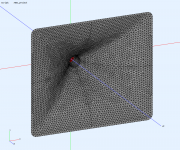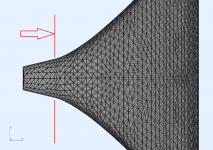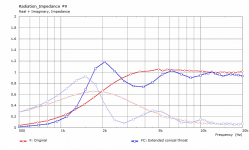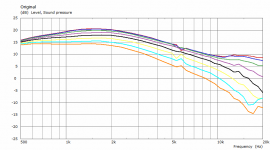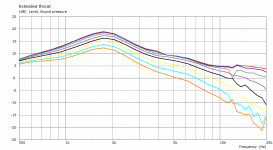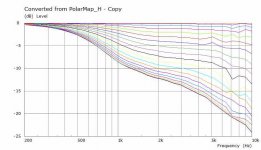Wow, those distortion levels are pretty unbelievable. What's the reference level?
The conditions were not stated, but the measurements posted (not just this plot) are consistent with Beyma's.
Just don't expect it to sound good at 600Hz, especially with such a small horn. 800Hz is a useful limit, although people have used it at 700Hz.
.
700 hz in domestic use ? That's a good information, that means paired with a good 15" and the right horn, it could be a Capacalmos for the poors 😀 (I think at me) . Not possible without DSP I assume ? (800 hz wit some few 15" could do: AE, PD, Faital 15PR400/15FH520)
Last edited:
In order not to pollute mabat's thread too much, I think it would be wise to stop the discussion about drivers for now.
It seems very strange to me if the public and private statements of Dr. Voishvillo differ. If only because public statements seem reasoned enough.
My discussions with Alex were some time ago. He did an internal JBL study that he told me about that duplicated Lidia and my work. He told me that he had found the same thing that we had found, so maybe he found something new.
That said, the questions that I would ask him are:
1) How did you determine that the sound quality was impaired? A blind study?
2) How did you determine that it was the nonlinearity of the breakup that was audible and not simply the breakup itself. In our study we did not find any audible effects with level, as would be required if the problem was nonlinear, but we did find that the breakup modes were audible (as stated before.) Hence, it would be necessary to refute our previous work and show that it was in fact the nonlinearity and NOT simply the modes themselves. The later case I would agree with completely, the former, not so much.
Last edited:
My discussions with Alex were some time...
Approximately how far back?
His published papers seem to show considerable concern about non-linearity.
- "Application of Modulated Musical Multitone Signal for Evaluation of Horn Driver Sound Quality"
- "Comparison of Horn Drivers’ Nonlinear Distortion Measured by Different Methods"
- "Comparative Static and Dynamic FEA Analysis of Single and Dual Voice Coil Midrange Transducers" (about non linearity in cone speakers for mid-horns)
- "Nonlinear Flux Modulation Effects in Moving Coil Transducers"
- "Application of Static and Dynamic Magnetic Finite Elements Analysis to Design and Optimization of Transducers Moving Coil Motors" (also non linearity in cone speakers for mid-horns)
Curiously, the most recent is "Application of Matrix Analysis for Derivation of Acoustical Impedance of Horns".
So looks like he is concerned about the acoustic load too.
Of course, he is involved in pro-sound so the priorities are a bit different.
Educational papers however.
Best wishes
David
David, could it be that Voishvillo's interest and research is partly related to (compression) drivers with annular diaphragms for which non linear distortion, acoustic loading characteristics etc. are different?
I meant to get back to this earlier.
Alex specialty is in nonlinear acoustics. When we first met I too was doing a lot of nonlinear work as well. At that time we both believed that nonlinearity was a major aspect of sound design.
Then I started to study the perception of nonlinearity and found, much to my surprise, that they really weren't very audible. Alex became quite interested in our work and, as I said, told me that he had duplicated it at JBL. He admitted to duplicating our results.
Why it now appears that he has changed his mind, I can't explain, other than to say that maybe he hasn't - I have not talked with him for a long time. Many of those papers are old, back when even I myself believed in the high audibility of nonlinear distortion.
But I still remain cautious about the "nonlinearity of breakup modes" as this is not something that I have ever seen before. And I wonder if it is actually the nonlinearity of the modes that is audible or is it the ears increased sensitivity to them at higher SPLs (i.e. nonlinear response.) We see the later in a lot of places, but as I have said, I have never seen the former.
Does anyone have evidence of modal breakup subharmonics? That is, theoretically, highly improbable in a driver that is not operating beyond its design intent. Buckling/oil-canning causes subharmonics, but I just can't see how the rim modes are doing that. I suppose that it's possible, just does not seem likely.
Alex specialty is in nonlinear acoustics. When we first met I too was doing a lot of nonlinear work as well. At that time we both believed that nonlinearity was a major aspect of sound design.
Then I started to study the perception of nonlinearity and found, much to my surprise, that they really weren't very audible. Alex became quite interested in our work and, as I said, told me that he had duplicated it at JBL. He admitted to duplicating our results.
Why it now appears that he has changed his mind, I can't explain, other than to say that maybe he hasn't - I have not talked with him for a long time. Many of those papers are old, back when even I myself believed in the high audibility of nonlinear distortion.
But I still remain cautious about the "nonlinearity of breakup modes" as this is not something that I have ever seen before. And I wonder if it is actually the nonlinearity of the modes that is audible or is it the ears increased sensitivity to them at higher SPLs (i.e. nonlinear response.) We see the later in a lot of places, but as I have said, I have never seen the former.
Does anyone have evidence of modal breakup subharmonics? That is, theoretically, highly improbable in a driver that is not operating beyond its design intent. Buckling/oil-canning causes subharmonics, but I just can't see how the rim modes are doing that. I suppose that it's possible, just does not seem likely.
Last edited:
I have nothing much to add regarding nonlinear distortion but I have made an experiment with a conical throat extension, which I suppose is closer to what a majority of compression drivers look like (this in particular was aimed at BMS 4554).
- Original throat / driving diameter: 36 mm / 27° angle
- Extension length: 30 mm / driving diameter: 22 mm
Resulting acoustical impedances for the driving elements:
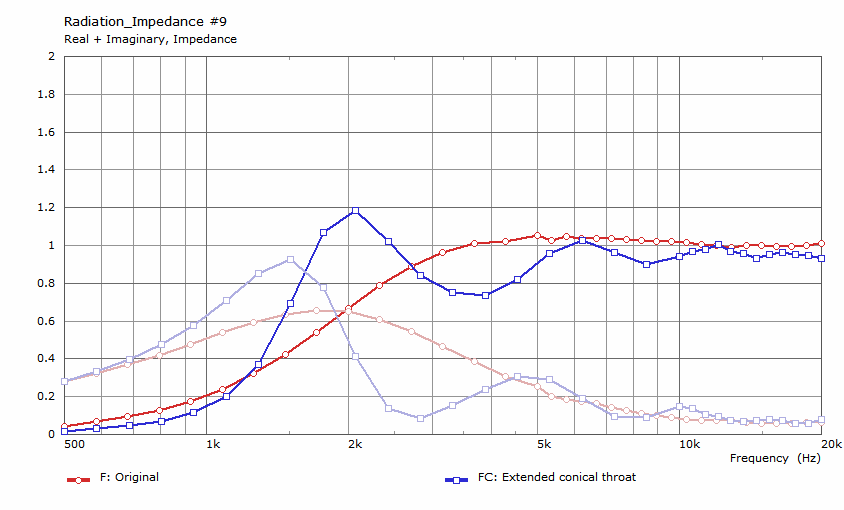
- Original throat / driving diameter: 36 mm / 27° angle
- Extension length: 30 mm / driving diameter: 22 mm
Resulting acoustical impedances for the driving elements:
Attachments
Last edited:
I have made an experiment with a conical throat extension, which I suppose is closer to what a majority of compression drivers look like (this in particular was aimed at BMS 4554).
- Original throat / driving diameter: 36 mm / 27° angle
- Extension length: 30 mm / driving diameter: 22 mm
Resulting acoustical impedances for the driving elements:
You sure are a master of your tools. I wish that I had that kind of capability back when.
Bravo!
I had always expected a reflection at a aperture where, even though the wall slopes are the same, the actual wavefronts are not - the coordinate systems are not the same at short distances, i.e. the throat. Hence, a reflection and wavy impedances.
This is why I switched from the DE250 to the DE500 - shorter throat extension.
mabat can you explain what you did to get VACS to display the normalised polar data as SPL curves like this?
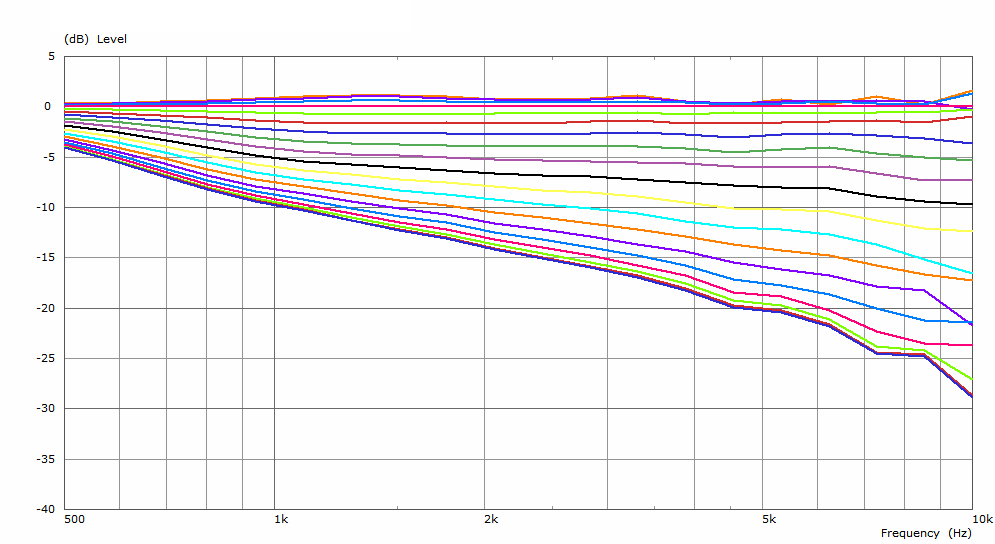
I have tried to work it out myself but got nowhere
I want to be able to export the data into Vituix to look at the DI of different guides. I can get the text export of the separated curves to work but the normalized polar data should work better for half space DI comparison.
I have tried to work it out myself but got nowhere
I want to be able to export the data into Vituix to look at the DI of different guides. I can get the text export of the separated curves to work but the normalized polar data should work better for half space DI comparison.
For a polar map go to menu Graph - convert curves <-> countour, i.e. these polars are converted from polar map data. Polar maps can be normalized to any angle you want by Processing - Normalizing... prior to that (and this also works for any SPL chart if you normalize "to original curve"). Beware that by default these maps are already normalized to 20° (a safe bet for the most part) - this can't be changed in the older versions of the tool but you can change that manually in VACS as just described.
Last edited:
When you made the DI curve in Vituix did you just manually rename the ABEC text files to represent the correct angles?
I wondered why is that and this is actually a very intuitive explanation.I had always expected a reflection at a aperture where, even though the wall slopes are the same, the actual wavefronts are not [...] Hence, a reflection and wavy impedances.
Frankly I don't remember but probably yes.When you made the DI curve in Vituix did you just manually rename the ABEC text files to represent the correct angles?
And BTW, for a DI curve alone you don't have to normalize the data, it makes no difference.
Last edited:
Got it working 🙂
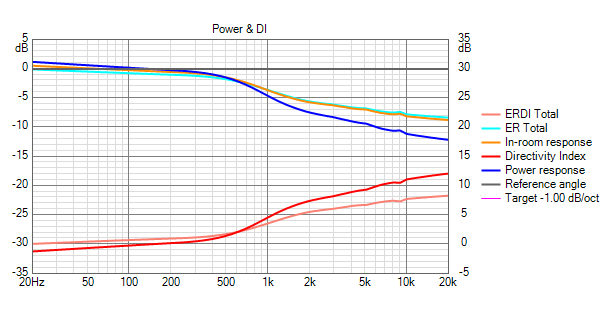
For anyone else who wants to do this more than once I created a list pattern for Advanced Renamer which will take the ABEC file numbers and change them to the correct polar numbers to work with Vituix. Just add the _Hor_ and _Ver_ when exporting from ABEC. Attached as a zip file.
For anyone else who wants to do this more than once I created a list pattern for Advanced Renamer which will take the ABEC file numbers and change them to the correct polar numbers to work with Vituix. Just add the _Hor_ and _Ver_ when exporting from ABEC. Attached as a zip file.
Attachments
Last edited:
Hmm, I would not expect such rise from the polars, but looking again, I suppose it could be correct. But is it really? As the power response corresponds to a polar at about 45 deg off-axis, could be.
Last edited:
- Home
- Loudspeakers
- Multi-Way
- Acoustic Horn Design – The Easy Way (Ath4)
